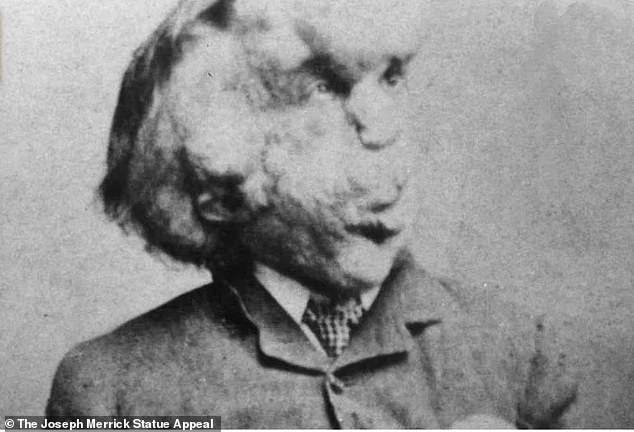Tens of millions of people are living with a rare disease, defined as a condition suffered by fewer than 200,000 people.
Global experts have identified more than 7,000 of these conditions, which include all pediatric cancers, more than 100 conditions that can cause 'childhood dementia’ and hundreds that impact the body’s ability to break down nutrients, which can lead to deadly organ damage.
In total, rare diseases affect approximately 25 to 30million Americans and 350million people across the globe.
The conditions do not have a cure and more than 90 percent have no FDA-approved therapies, leaving doctors and patients to figure out the best course of treatment on their own.
The diseases affect people from all walks of life and most don’t seem to discriminate based on sex, race or location. And while some are genetic or hereditary – passed down through families – there are plenty that seemingly occur randomly.
Below DailyMail.com details eight of the rarest – and strangest – diseases in the world.
Elephant man syndrome

Joseph Merrick, a severely deformed man who lived in London in the late 1800s, suffered from elephant man syndrome

Elephant man syndrome, or proteus syndrome, causes an abnormal overgrowth of bone and tissue in certain parts of the body
Elephant man syndrome, also known as proteus syndrome, was highlighted in the 1980 Hollywood film called The Elephant Man.
The film is based on the real-life case of Joseph Merrick, a severely deformed man who lived in London in the late 1800s.
He suffered from the rare congenital disease, which causes an abnormal overgrowth of bone and tissue in certain parts of the body.
Growths tend to occur asymmetrically across the body and while they may be present at birth, most signs of elephant man syndrome appear between six and 18 months of age.
Malformations can grow on or around the skull, the abdomen, the hands and feet.
Sometimes the growths cause one leg to be longer than the other, leading to walking difficulties and growths along the spine can result in curvature and scoliosis.
According to the National Organization Rare Diseases, proteus syndrome is caused by a faulty AKT1 gene and patients may also experience benign and malignant tumors, respiratory problems and life-threatening blood clotting disorders.
Life expectancy ranges anywhere from nine months to 30 years depending on severity of the condition and there is no cure.
Mr Merrick died at 27 years old.
The disease affects males slightly more than females and experts estimate just fewer than 100 patients have been reported with the condition in the medical literature.
Human werewolf syndrome


An image of a 15-month old boy with congenital hypertrichosis lanuginosa (CHL), also known as human werewolf syndrome, which causes uncontrollable hair growth across the body
This rare disease causes uncontrollable hair to grow all over a person’s body, including their face.
Also known as congenital hypertrichosis lanuginosa (CHL), the condition is present from birth and symptoms appear in early childhood. The disease results in dark, fine and soft hair growing all over the body except the palms of the hands and soles of the feet, giving it the name werewolf syndrome.
The hair grows to be about one to two inches, but can be longer in more severe cases.
CHL is believed to be an inherited genetic condition.
The NIH’s Genetic and Rare Diseases Information Center (GARD) reports fewer than 1,000 people in the US have the disease.
There is no cure for the condition but patients can manage the signs and symptoms, including repeated shaving, waxing, bleaching, cutting or plucking of the hair.
Because the hair continues to grow back, any hair removal treatments have to be done on a continuous and fairly regular basis.
The medication eflornithine, a cream, is sometimes used and may be able to slow hair regrowth.
The major complication stemming from CHL is deteriorating mental health and experts urge doctors caring for these patients to screen for depression and prescribe antidepressants if indicated.
Walking corpse syndrome
While the name may sound like something heard in a zombie apocalypse movie, walking corpse syndrome, also called Cotard’s syndrome, causes people to believe parts of their body are missing, that they are dead or dying or that they don’t exist entirely.
The disease is extremely rare, with only 200 cases documented worldwide.
Because people don’t believe they exist, the disease often results in refusing to eat, self harm and social isolation.
There is no known cause of Cotard’s syndrome, though experts say it could be a symptom of a deeper neurological problem such as dementia, a toxic brain infection, migraines, Parkinson’s disease, epilepsy and stroke.
There is no direct cure for the condition, which has been theorized to be a purely delusional mental health illness brought on by a traumatic event or psychotic break, but a combination of talk therapy and medication is usually effective in helping people manage symptoms.
A case report of a 57-year-old diagnosed with walking corpse syndrome detailed a woman who recently found out her husband was having an affair and soon after developed a myriad of symptoms, including sadness, a stiff body, weakness, constipation and a feeling of suffocation.
Tests revealed no apparent cause.
Five months after her symptoms started, she began telling loved ones she was dying or dead. When she met with a psychiatrist, she told the doctor her skin was falling off and that her body was frozen stiff, indicating she was going to die soon.
She was admitted to the hospital and prescribed antianxiety medications and antidepressants and her delusions began to improve.
Alice in Wonderland syndrome

Alice in Wonderland syndrome is named after the famous novel because, like Alice in the book, sufferers feel their bodies are shrinking to a miniature size or growing disproportionately large
First identified in 1955 by British psychiatrist Dr John Todd, he named the rare disorder after the famous Lewis Carroll novel with the same title in which the main character feels her body is growing larger and smaller.
Also called Todd’s syndrome or dysmetropsia, sufferers of the condition experience a severely distorted self image, believing their heads and hands are either growing disproportionately large or are shrinking.
People with Alice in Wonderland syndrome also see objects as the wrong size and shape, meaning cars, buildings, people or animals may appear larger or smaller than they actually are.
They may also experience distortion with distances and see a relatively short hallway as never ending.
Other non-visual effects of the syndrome include the ground feeling spongy and having weird sensations when touching something, the feeling as if time is moving very quickly or very slowly and distorted sound perception.
Experts say it is difficult to estimate how many people have Alice in Wonderland syndrome because of a lack of research, misdiagnosis or duration of symptoms — the disease appears to be temporary.
From 1955 to 2015, just 169 cases were described in medical literature.
It is not known what exactly causes the disorder, but doctors hypothesize it could stem from bacterial or viral infections, strokes, degenerative brain diseases, migraines and seizures.
There is no cure for the disorder itself, but doctors try to identify and treat the underlying cause.
Alien hand syndrome

The condition became known as 'alien hand’ because patients sometimes feel as though another person (an alien) is controlling their limb
Sounding like something out of a sci-fi movie, alien hand syndrome (AHS) is a disorder in which a person’s hand moves on its own and is not under the person’s control.
It is also referred to a Dr Strangelove syndrome and sees the hand, frequently the left one, move and perform actions without a person being aware.
Because of its independent movements, patients often feel like their hand is being controlled by another person and become disconnected with the body part.
The person also does not have sensation in the hand and cannot feel anything the hand touches.
A report on the condition states the hand may move independently to perform tasks, such as scratching or unbuttoning pajamas, without the person’s knowledge.
One patient told the authors her alien hand tried to intermittently choke her and the hands of some study subjects fondled them or reached out to the study examiner without the patient being aware.
The authors added that people with AHS often 'treat the hand as though it were an errant child and rebuke, slap or chastise it.’
The condition became known as 'alien hand’ because patients feel as though another entity (an alien) is controlling the hand and the hand is 'acting on its own.’
Experts haven’t determined a cause for the condition but one study said it could occur just before or during a stroke and that it has been observed in people with lesions on their brain.
The syndrome has been reported after surgery on the corpus callosum – the area of the brain that connects the two hemispheres – and with brain tumors, aneurysms and degenerative brain diseases.
AHS is very rare, with only 40 to 50 recorded cases since it was first identified in 1909.
Stoneman syndrome

In season three of the hit medical drama Grey’s Anatomy, a patient arrives at the hospital suffering from fibrodysplasia ossificans progressiva (FOP) and she has lost nearly all movement due to the overgrowth of bone
This ultrarare genetic disorder, also known as fibrodysplasia ossificans progressiva (FOP) affects approximately one in 2million people, according to Orphan Net, which tracks rare diseases.
FOP, which turns people to human statues, is caused by a mutation in the ACVR1/ALK2 gene and it is not known if the condition is heredity.
Stoneman syndrome leads to the overgrowth of bone where tissues or muscles should be, taking away a person’s ability to walk or move and it can cause breathing difficulties.
Bone typically grows where it shouldn’t after trauma to an area.
Signs of the disease may begin in childhood and most patients born with FOP have disfiguration of their toes. In the first 10 years of life they usually experience random episodes of painful swelling in their soft tissue called flare ups.
These flare ups turn muscles, tendons, ligaments and tissues into heterotopic bone – or bone growth where it shouldn’t be.
There is no cure for the disease, but steroids given to patients within 24 hours of a flare up may help reduce inflammation in the beginning stages of the disease.
Patients are advised to be extremely cautious with their movements, as trauma to the body such as a fall can spark abnormal bone growth.
By a patient’s mid-twenties, most are wheelchair bound and the average lifespan is about 40 years old.
Most people with stoneman syndrome die of complications from the condition thoracic insufficiency syndrome, which prevents them from breathing properly and impedes proper development of the lungs.
Fish odor syndrome

In the movie The Holdovers, Paul Giamatti’s character suffers from fish odor syndrome, also called trimethylaminuria
A rare genetic disease, fish odor syndrome is also known as trimethylaminuria. It is caused by a defect in the FMO3 gene and is considered a metabolic disease.
The inherited condition causes a build up of the compound trimethylamine.
Trimethylamine is what gives rotten fish and other sea creatures their pungent odor. Because of the faulty FMO3 gene, the body doesn’t make a specific enzyme that helps break down chemicals in certain foods that produce trimethylamine in the body.
Because people with trimethylaminuria can’t process the compound, large amounts of it accumulate in urine, sweat and a person’s breath – making them smell like fish.
There are no other symptoms of the condition, but it can lead to severe psychological and emotional issues.
The disease is so rare that global rare disease databases do not have an estimate of how many people suffer from the condition.
There is no cure fish odor syndrome but management can include changes in diet, acidic soaps, probiotics, activated charcoal, lotions and vitamin B12 supplements.
Sanfilippo syndrome


At 18 months old, Lydia was diagnosed with Sanfilippo syndrome, a rare genetic disorder that causes cognitive decline in children
Sanfilippo syndrome is one of many rare conditions that can lead to what doctors call 'childhood dementia.’
It is a rare genetic disease that affects just 5,000 Americans and causes dementia-like symptoms in children, including the inability to speak, walk, eat on their own or remember any of the skills they’ve learned throughout their life.
It impacts about one in 70,000 births every year and develops when each parent passes on a faulty gene. Most sufferers begin to deteriorate around four years old and don’t live past their early teen years.
In people with Sanfilippo syndrome, they lack an enzyme that breaks down a waste product produced in the body, which leads to their brains becoming 'clogged with toxic levels’ of the material, according to the Cure Sanfilippo Foundation.
Signs and symptoms include a mild speech delay, hyperactivity, irritability, coarse and excess hair growth, coarse facial features, severe sleeping problems, respiratory infections, ear infections, digestive issues and a wobbly walk.
As the toxicity levels build in the brain, it can lead to seizures, movement issues and chronic pain, but because of its behavioral symptoms, Sanfilippo is often initially misdiagnosed as ADHD or autism.
There are four subtypes of the condition depending on which enzyme is missing or broken. Across the globe, MPS IIIA is the most common and makes up more than half of the cases.
It is also considered the most severe, causing symptoms and death at earlier ages, according to the foundation.
There is no approved cure for the disease but the Sanfilippo Foundation said research and clinical trials for enzyme replacements are working toward treatments that could potentially slow the progression of the disease and extend a patient’s life.
As of now, doctors seek to treat and manage symptoms that accompany Sanfilippo.
In June, it was announced that Ultragenyx Pharmaceutical would prepare to file for approval for its Sanfilippo gene therapy by the end of 2024 after working with the FDA to gain accelerated review on its potential treatment.
In an early trial, the biotech said it saw stability or gains in cognitive function in 16 of the 17 participants receiving the therapy.
Additionally, a 2023 study funded by Orchard Therapeutics from Manchester University NHS Foundation Trust found four of five patients diagnosed with Sanfilippo continued to gain cognitive skills on par with development in healthy children after being given an investigational gene therapy.
It is not known for either therapy how much they will cost, when and how they will be made available or if medical insurance will cover them.




